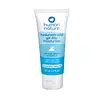What's inside
What's inside
 Key Ingredients
Key Ingredients

 Benefits
Benefits

 Concerns
Concerns

 Ingredients Side-by-side
Ingredients Side-by-side

Water
Skin ConditioningButylene Glycol
HumectantGlycerin
HumectantPhenoxyethanol
PreservativePEG-60 Hydrogenated Castor Oil
EmulsifyingTriethanolamine
BufferingCarbomer
Emulsion StabilisingParfum
MaskingDisodium EDTA
Cyclohexane
SolventPentylene Glycol
Skin Conditioning1,2-Hexanediol
Skin ConditioningCentella Asiatica Extract
CleansingSodium Hyaluronate
HumectantPolygonum Cuspidatum Root Extract
AntioxidantScutellaria Baicalensis Root Extract
AstringentCamellia Sinensis Leaf Extract
AntimicrobialGlycyrrhiza Glabra Root Extract
BleachingCaprylic/Capric Triglyceride
MaskingChamomilla Recutita Flower Extract
MaskingEthylhexylglycerin
Skin ConditioningHydrogenated Lecithin
EmulsifyingRosmarinus Officinalis Leaf Extract
AntimicrobialCeramide NP
Skin ConditioningHydrolyzed Hyaluronic Acid
HumectantHydrolyzed Sodium Hyaluronate
Skin ConditioningWater, Butylene Glycol, Glycerin, Phenoxyethanol, PEG-60 Hydrogenated Castor Oil, Triethanolamine, Carbomer, Parfum, Disodium EDTA, Cyclohexane, Pentylene Glycol, 1,2-Hexanediol, Centella Asiatica Extract, Sodium Hyaluronate, Polygonum Cuspidatum Root Extract, Scutellaria Baicalensis Root Extract, Camellia Sinensis Leaf Extract, Glycyrrhiza Glabra Root Extract, Caprylic/Capric Triglyceride, Chamomilla Recutita Flower Extract, Ethylhexylglycerin, Hydrogenated Lecithin, Rosmarinus Officinalis Leaf Extract, Ceramide NP, Hydrolyzed Hyaluronic Acid, Hydrolyzed Sodium Hyaluronate
Water
Skin ConditioningPropanediol
SolventBetaine
HumectantGlycerin
HumectantStearyl Alcohol
EmollientAloe Barbadensis Leaf Juice
Skin ConditioningGlycine Soja Oil
EmollientDicaprylyl Ether
EmollientHydrolyzed Hyaluronic Acid
HumectantBeta Vulgaris Root Extract
Skin ConditioningHydrolyzed Corn Starch
HumectantTapioca Starch
Xanthan Gum
EmulsifyingSclerotium Gum
Emulsion StabilisingCapryloyl Glycerin/Sebacic Acid Copolymer
Skin ConditioningDiheptyl Succinate
EmollientTocopherol
AntioxidantGlyceryl Caprylate
EmollientCetearyl Alcohol
EmollientCetyl Alcohol
EmollientMyristyl Alcohol
EmollientArachidyl Alcohol
EmollientGlyceryl Stearate Citrate
EmollientCitric Acid
BufferingSodium Citrate
BufferingGluconolactone
Skin ConditioningCalcium Gluconate
HumectantParfum
MaskingSodium Benzoate
MaskingPotassium Sorbate
PreservativeWater, Propanediol, Betaine, Glycerin, Stearyl Alcohol, Aloe Barbadensis Leaf Juice, Glycine Soja Oil, Dicaprylyl Ether, Hydrolyzed Hyaluronic Acid, Beta Vulgaris Root Extract, Hydrolyzed Corn Starch, Tapioca Starch, Xanthan Gum, Sclerotium Gum, Capryloyl Glycerin/Sebacic Acid Copolymer, Diheptyl Succinate, Tocopherol, Glyceryl Caprylate, Cetearyl Alcohol, Cetyl Alcohol, Myristyl Alcohol, Arachidyl Alcohol, Glyceryl Stearate Citrate, Citric Acid, Sodium Citrate, Gluconolactone, Calcium Gluconate, Parfum, Sodium Benzoate, Potassium Sorbate
Ingredients Explained
These ingredients are found in both products.
Ingredients higher up in an ingredient list are typically present in a larger amount.
Glycerin is already naturally found in your skin. It helps moisturize and protect your skin.
A study from 2016 found glycerin to be more effective as a humectant than AHAs and hyaluronic acid.
As a humectant, it helps the skin stay hydrated by pulling moisture to your skin. The low molecular weight of glycerin allows it to pull moisture into the deeper layers of your skin.
Hydrated skin improves your skin barrier; Your skin barrier helps protect against irritants and bacteria.
Glycerin has also been found to have antimicrobial and antiviral properties. Due to these properties, glycerin is often used in wound and burn treatments.
In cosmetics, glycerin is usually derived from plants such as soybean or palm. However, it can also be sourced from animals, such as tallow or animal fat.
This ingredient is organic, colorless, odorless, and non-toxic.
Glycerin is the name for this ingredient in American English. British English uses Glycerol/Glycerine.
Learn more about GlycerinHydrolyzed Hyaluronic Acid is a form of hyaluronic acid. It is created by the hydrolysis of hyaluronic acid with a high molecular weight. Once created, Hydrolyzed Hyaluronic Acid has a low molecular weight.
Low molecular weight HA has been shown to hydrate and increase elasticity of the skin. Increasing elasticity is also associated with reduction of wrinkle depth.
One study found topical low molecular weight hyaluronic acid may be considered for the treatment of rosacea in the adult population. However, we always recommend speaking with a professional about your skin concerns.
Hyaluronic acids are a humectant. This means they draw moisture from the air. Hyaluronic acids help moisturize, soothe, and protect the skin.
Read more about other common forms of hyaluronic acid:
Learn more about Hydrolyzed Hyaluronic AcidParfum is a catch-all term for an ingredient or more that is used to give a scent to products.
Also called "fragrance", this ingredient can be a blend of hundreds of chemicals or plant oils. This means every product with "fragrance" or "parfum" in the ingredients list is a different mixture.
For instance, Habanolide is a proprietary trade name for a specific aroma chemical. When used as a fragrance ingredient in cosmetics, most aroma chemicals fall under the broad labeling category of “FRAGRANCE” or “PARFUM” according to EU and US regulations.
The term 'parfum' or 'fragrance' is not regulated in many countries. In many cases, it is up to the brand to define this term.
For instance, many brands choose to label themselves as "fragrance-free" because they are not using synthetic fragrances. However, their products may still contain ingredients such as essential oils that are considered a fragrance by INCI standards.
One example is Calendula flower extract. Calendula is an essential oil that still imparts a scent or 'fragrance'.
Depending on the blend, the ingredients in the mixture can cause allergies and sensitivities on the skin. Some ingredients that are known EU allergens include linalool and citronellol.
Parfum can also be used to mask or cover an unpleasant scent.
The bottom line is: not all fragrances/parfum/ingredients are created equally. If you are worried about fragrances, we recommend taking a closer look at an ingredient. And of course, we always recommend speaking with a professional.
Learn more about ParfumWater. It's the most common cosmetic ingredient of all. You'll usually see it at the top of ingredient lists, meaning that it makes up the largest part of the product.
So why is it so popular? Water most often acts as a solvent - this means that it helps dissolve other ingredients into the formulation.
You'll also recognize water as that liquid we all need to stay alive. If you see this, drink a glass of water. Stay hydrated!
Learn more about Water